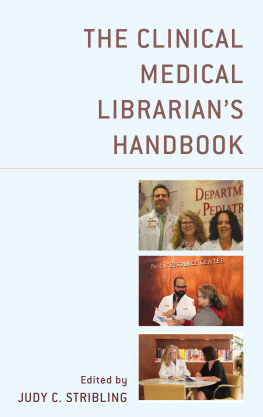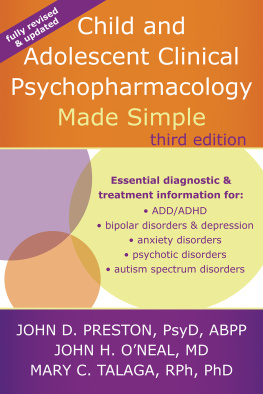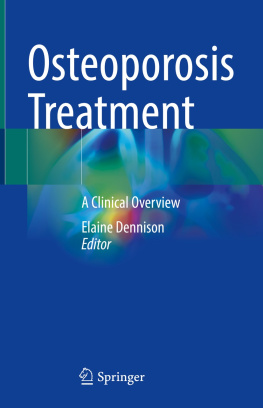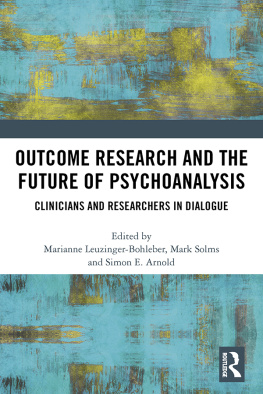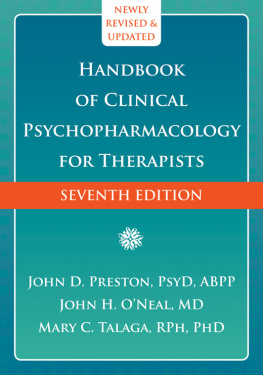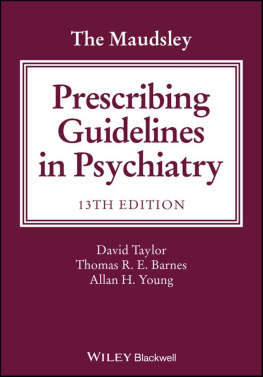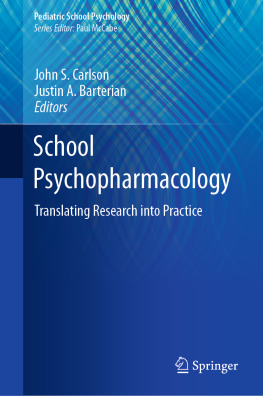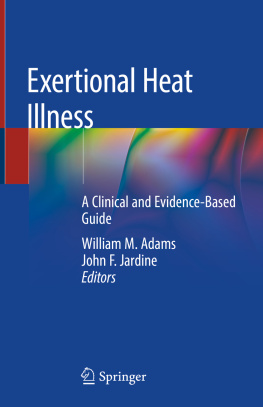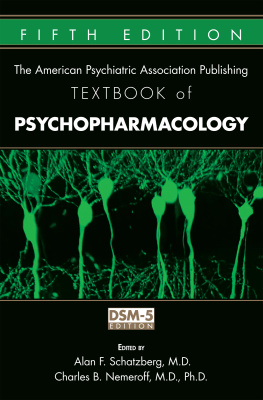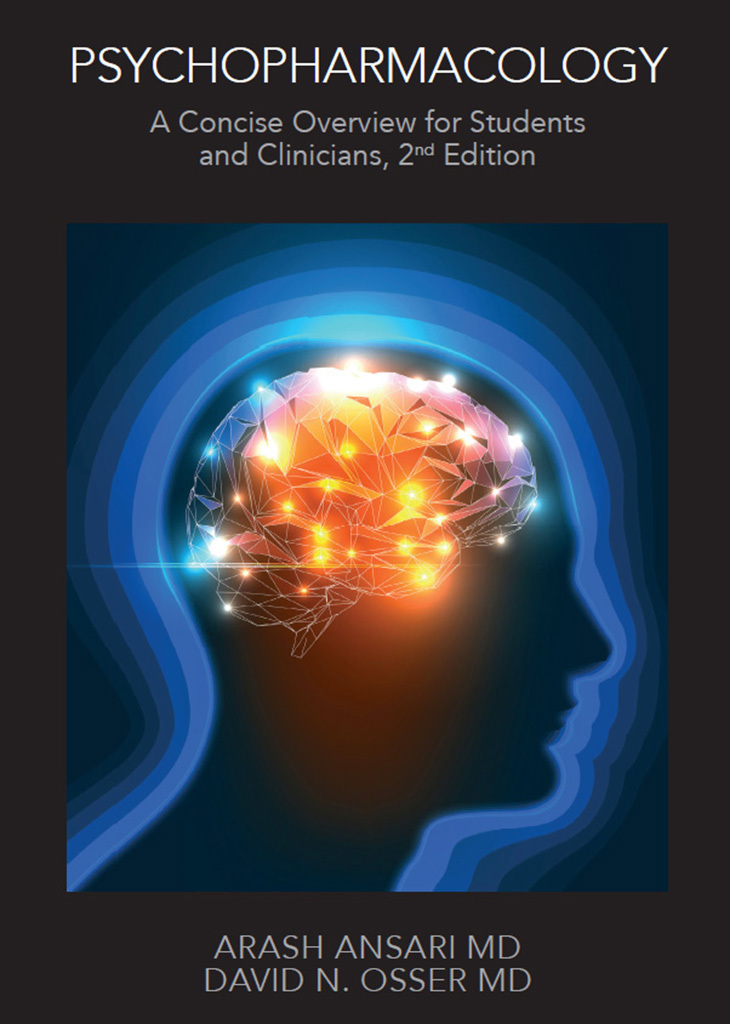PSYCHOPHARMACOLOGY
A Concise Overview for Students
and Clinicians, 2 nd Edition
ARASH ANSARI MD
DAVID N. OSSER MD
Copyright 2015 by Arash Ansari MD and David N. Osser MD
All rights are reserved. No part of this publication may be electronically saved, reproduced or transmitted in any form or by any means without the written permission of the authors.
ISBN: 1503171116
ISBN 13: 9781503171114
Library of Congress Control Number: 2014921067
CreateSpace Independent Publishing Platform
North Charleston, South Carolina
IMPORTANT NOTE: The information presented in this manuscript is meant to be an overview of some of the major topics in psychopharmacology and an introduction to the field, but not a handbook for the administration of available psychotropics. Specifics regarding clinical use of medications including doses are presented for educational purposes only. Although every effort has been made to present the material accurately, we cannot rule out typographical or other errors. As always, the package insert of each medication should be reviewed prior to prescription and administration, and treatment should be customized to the needs and characteristics of the individual patient after a thorough psychiatric evaluation .
PREFACE
Psychopharmacology, A Concise Overview for Students and Clinicians, 2 nd Edition , is an updated and expanded edition of the authors previous book Psychopharmacology for Medical Students published in 2009. I nformation about newly available medications has been included.
Although much of what was known about psychopharmacology and included in the first book is still current, this new text addresses areas of controversy and changes in emphasis that have developed over the past 5 years. The authors goal in this edition has been to help practicing clinicians as well as students gain access to actionable information that may help them provide optimum patient care.
TABLE OF CONTENTS
LIST OF TABLES
INTRODUCTION
The use of psychotropic medicines to treat psychiatric illness has increased dramatically in recent times. Although the biological etiologies of most psychiatric disorders are still unclear, effective pharmacological treatments have been developed over the past 60 years that have become part of the standard of care.
Psychiatric medications are part of the armamentarium of most practicing physicians and prescribers, regardless of medical specialty. Although more severe types of mental illness are likely to be treated by psychiatrists, most prescriptions for psychotropics (e.g., anxiolytics and newer antidepressants) are written by non-psychiatrists (Stagnitti 2008). Psychiatric medications remain consistently prominent in the list of the top 200 most prescribed medications, and in the top 20 pharmaceuticals in terms of sales in the United States. From 2008 to 2012, medications for mental health were ranked as the 3 rd top therapeutic class (after antihypertensives and pain medications) in the number of dispensed prescriptions (IMS 2014).
As in the treatment of all medical disorders, a thorough evaluation must precede psychiatric diagnosis and subsequent psychopharmacological treatment. A complete history should be obtained and the patient should be examined. Medical or neurological etiologies that may contribute to the presentation of psychiatric illness should be identified and addressed. Nearly 10% of patients presenting with a psychiatric complaint will turn out to have a medical problem as the primary cause (Hall, Popkin, et al. 1978). Active substance abuse, if present, should be treated before or at the same time that pharmacological therapies are initiated. Obtaining collateral information from other treating clinicians and patients significant others may also be needed in many cases.
Once a clear diagnosis is made, one should consider whether the condition requires medication treatment. Mild to moderate anxiety and depression often respond equally well to supportive interventions or psychotherapy (King, Sibbald, et al. 2000; Barkham and Hardy 2001; Cuijpers, van Straten, et al. 2009; APA 2010). Antidepressants may not be as effective as previously thought for the treatment of milder forms of depression (see ). On the other hand, if the psychiatric disorder or symptoms are severe, or if psychosis, mania, or dangerousness are present, then psychopharmacological treatments (and referral to a psychiatrist) are usually indicated. Although many primary care physicians may be quite comfortable with their ability to manage psychiatric illness, the amount of monitoring that is required to provide adequate follow-up should be taken into account before initiating treatment. When treating moderate to severe psychiatric illness, optimum therapy often includes the use of concomitant psychotherapy in addition to pharmacotherapeutic measures (Keller, McCullough, et al. 2000; Banerjee, Shamash, et al. 1996; Reynolds, Frank, et al. 1999; Katon, Von Korff, et al. 1999; Miklowitz 2008; APA 2010).
Placebo-controlled randomized controlled trials (RCTs), using strict exclusionary criteria when selecting subjects, have traditionally been used to study a psychiatric medications efficacy (i.e., the ability of the medication to treat the condition better than placebo under controlled conditions). For example, studies comparing an antidepressant to placebo may use an 8-week double-blind parallel design and include subjects with major depression but without any other medical or psychiatric co-morbidities. Response may be defined as a 50% improvement in a chosen outcome rating scale. These efficacy studies also provide the response data that pharmaceutical companies must submit to the Food and Drug Administration (FDA) to obtain indications for developed drugs. However, in these studies, the use of exclusionary criteria and varying definitions of response limit their applicability to the general patient population, which often presents with more complex comorbid problems.
Effectiveness studies, on the other hand, are often larger, naturalistic studies that attempt to approximate real world conditions by studying patients who may have psychiatric and medical co-morbidities, and by relying on broader outcome measures for assessing response. These studies may compare outcomes of treatment with multiple medications. As such, effectiveness studies complement our understanding of drug efficacy (Summerfelt and Meltzer 1998). Recent National Institute of Mental Health (NIMH) sponsored effectiveness studies have the added benefit of funding from a neutral (non-pharmaceutical industry) source, thereby avoiding possible study design shortcomings or evaluator biases that may influence study results (Heres, Davis, et al. 2006; Osser 2008). These studies include (1) the Clinical Antipsychotic Trials of Intervention Effectiveness (CATIE) (Keefe, Bilder, et al. 2007; Lieberman, Stroup, et al. 2005), (2) the Sequenced Treatment Alternatives to Relieve Depression Study (STAR*D) (Rush, Trivedi, et al. 2006; McGrath, Stewart, et al. 2006; Nierenberg, Fava, et al. 2006; Trivedi, Fava, et al. 2006; Fava, Rush, et al. 2006), (3) the Systematic Treatment Enhancement Program for Bipolar Disorder (STEP-BD) (Sachs, Nierenberg, et al. 2007; Goldberg, Perlis, et al. 2007; Miklowitz, Otto, et al. 2007), (4) the Clinical Antipsychotic Trials of Intervention EffectivenessAlzheimers Disease (CATIE-AD) (Schneider, Tariot, et al. 2006; Sultzer, Davis, et al. 2008), and (5) the National Institute of Alcohol Abuse and Alcoholism (NIAAA) sponsored Combined Pharmacotherapies and Behavioral Interventions study (COMBINE) (Anton, OMalley, et al. 2006; Anton, Oroszi, et al. 2008). Findings from these studies continue to influence clinical psychiatric practice.


